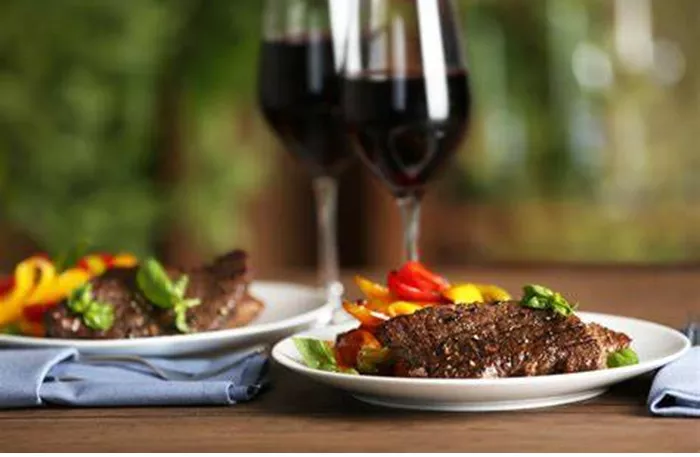Shanghai, China —In a quiet but symbolic move, Prada has launched its first standalone restaurant in China, marking a new milestone in the luxury brand’s evolution from fashion house to full-fledged lifestyle curator. Located in Shanghai’s historic Rong Zhai villa, the restaurant—named Mi Shang, which loosely translates to “enamor”—melds cinematic atmosphere with culinary artistry.
The interior of Mi Shang was conceived by acclaimed Hong Kong director Wong Kar-wai, invoking the moody elegance of his iconic film In the Mood for Love. With plush velvet booths and a richly stylized ambiance, the venue evokes a romantic, filmic nostalgia emblematic of Wong’s signature aesthetic.
At the helm of the kitchen is Italian chef Lorenzo Lunghi, whose menu is a seamless fusion of Italian and Chinese cuisine. Dishes such as tortellini filled with traditional dumpling stuffing and Chinese cabbage served with cacio e pepe sauce embody what Wong calls a “mirror image between Italy and China, Milan and Shanghai.” It’s a metaphor that reflects both culinary harmony and visual storytelling—central to both Wong’s films and Prada’s branding.
Open daily from 10 a.m. to 10 p.m., Mi Shang serves coffee, lunch, afternoon tea, and dinner. Dining reservations must be made via WeChat, requiring a RMB 300 (USD 42) deposit. Meal durations are limited to 90 or 120 minutes.
A Broader Luxury Strategy
Prada’s foray into fine dining reflects a broader shift in how global luxury brands are rethinking physical spaces—not just as points of sale, but as immersive brand experiences. Before the pandemic, brands like Gucci, Chanel, and Tiffany experimented with pop-up cafes and coffee bars in cities such as Beijing, Shanghai, Shenzhen, and Hong Kong. These efforts were often temporary, designed to coincide with store openings or product launches.
“Cafes don’t need a full kitchen or exhaust system,” explained Wang Zhendong, chairman of Shanghai Feiyue Investment Management, in an interview with Jiemian News. “It’s a lightweight model that fits easily into fashion retail and supports brand lifestyle narratives.”
A more significant pivot came in 2022 when Louis Vuitton opened The Hall, its first full-service restaurant in Asia, housed in a restored Qing dynasty guildhall in Chengdu. That move underscored the increasing ambition of luxury brands to go beyond short-term pop-ups and commit to long-term hospitality ventures. According to Swire Properties, licensing a restaurant in a heritage site required months of complex negotiations—emphasizing the seriousness of the endeavor.
Profit potential is clear. Swire reported that Maison Margiela’s flagship cafe in Chengdu generated up to RMB 40,000 (USD 5,600) daily at peak traffic, proving that luxury dining can offer both brand prestige and financial return.
Outsourcing for Excellence
Despite their branding prowess, most luxury brands rely on hospitality partners to manage operations. Louis Vuitton’s The Hall, for instance, is operated by Yunmi Group, which also runs high-end establishments like Da Vittorio in Shanghai.
These ventures are not simply about profit; they’re about engagement. In an increasingly competitive retail landscape, experience is everything. Luxury executives acknowledge that foot traffic is the new currency—and restaurants, even modest ones, help drive it. A coffee priced at RMB 40 (USD 5.60) might lead to the sale of a fragrance; a RMB 4,000 (USD 560) tasting menu could precede the purchase of a handbag. The strategy is subtle, yet calculated.
Dining as a Real Estate Strategy
Hospitality is now shaping retail tenancy models. Wynn Macau, known primarily for hotels and resorts, has pivoted aggressively into food and beverage offerings. On April 28, Wynn’s Cotai resort unveiled Leela, a dining concept blending upscale and casual elements. The venue features Southeast Asian, South Asian, and Japanese cuisines, alongside well-known mainland Chinese chains.
“Today’s consumers prioritize experience over shopping alone,” said Wynn Macau president Chen Zhiling. Wynn now operates dozens of dining outlets, from Michelin-starred venues to casual cafes. But challenges remain: staffing flexibility, service quality, and preserving brand identity amid diversification.
Wynn’s retail rental income fell 8% last quarter, reaching just 74% of pre-pandemic levels. With rents for European luxury tenants often tied to sales performance, declining consumption is pushing property owners to consider rent reductions to retain marquee brands.
The Waning Luster of Western Luxury
While tourism in Macau surged 30.1% year-on-year in the first three quarters of 2024, average per-capita spending fell 17% to MOP 2,168 (USD 268). Mainland Chinese tourists spent 21.7% less on average. Retail analyst Li Jiaxiang put it bluntly: “The golden age of luxury may never return.”
The real challenge may be cultural. For years, Western luxury brands tried to mold Chinese consumer preferences. A telling moment came a decade ago, when a French yacht broker, speaking on the Bund in Shanghai during a GQ documentary, remarked: “We need to teach the Chinese how to enjoy themselves.” That perspective now seems both outdated and misguided.
China’s luxury consumers are not spending less—they are simply spending differently. The rise of homegrown brands like Laopu Gold illustrates a shift in loyalty and taste. For the first time in decades, the grip of European luxury on the Chinese market is beginning to loosen.
Luxury brands may continue to expand into lifestyle spaces, but they do so in a market where prestige alone is no longer enough. Authenticity, cultural fluency, and experiential value will be key to survival in China’s rapidly evolving consumer landscape.
You Might Be Interested In:


